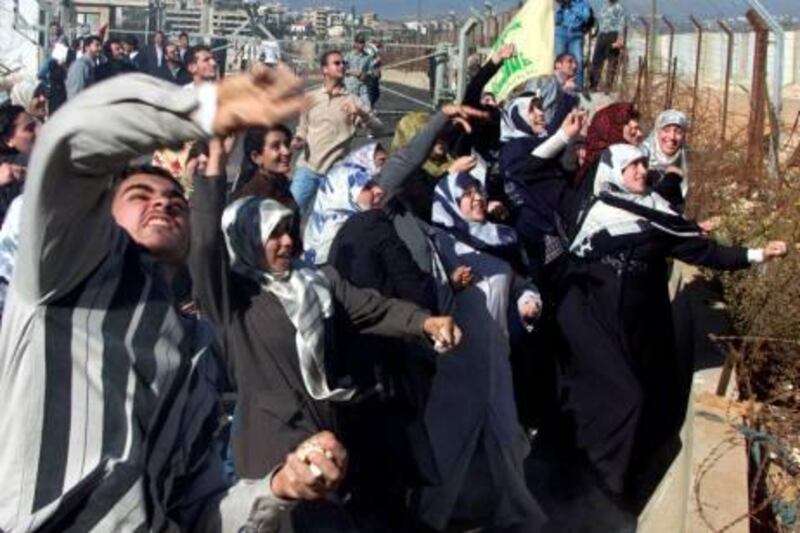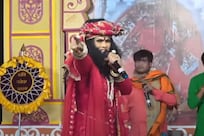Under the current, extraordinary circumstances in the wider Arab region, the struggles to form Lebanon’s government might appear something of a sideshow. The uprisings of Tunisia and Egypt, and more recently in Libya, Yemen and Bahrain, the emergence of “people power” as a genuine factor in the politics of the Arab region, the continued decline of US influence, the impact of Al Jazeera and networking media as hugely influential social and political tools, the apparent retreat of Islamist influence and return of Arab nationalist sentiment: this is the real news in a region changing its shape and rediscovering its identity before our very eyes.
And yet, in the middle of all this, Lebanon has a place that the great events of the wider region should not allow us to forget. This is true despite the country’s penchant for petty sectarian politics, parochialism and corruption; despite its elite’s sense of entitlement and recurrent self-centeredness, and even its crass consumerism and anti-environmentalism.
Rather, there is the other Lebanon, anchored in its history of sectarian tolerance and its long-standing resistance to Israel, its rejection of the sort of imposed "peace" terms that humbled Egypt, Jordan and the Palestinian Liberation Organization. This other Lebanon liberated its own land from Israeli occupation in May 2000. It withstood a war launched against it by Israel
in July 2006 with the full backing of the permanent members of the UN Security Council, a war to impose what Condoleezza Rice infamously called "a new Middle East".
Accordingly, this Lebanon ought to form a cornerstone of the new regional configuration currently being fought out in the streets of Benghazi, Cairo, Manama, Sana’a and other Arab cities. The question is, will the contradictions reflected in its sectarian system lead it into crisis yet again, and keep it from taking its place in the new Arab regional system? It would be ironic if the very forces which had made Lebanon a beacon of Arab pride during the last decade now confined it to the ignominy of back-room deals and inter-factional squabbling. But that, alas, looks the most likely outcome.
On May 21, 2000, after 18 years of resistance by various Lebanese factions and particularly the Iran-backed Hizbollah, civilians in southern Lebanon began marching against the Israeli army and its proxy Lebanese militia, the renegade South Lebanon Army. Without firing a bullet, they moved towards the occupied villages of Qantara, then Taibi, Adaisseh, Houleh, and Markaba, liberating them one by one.
Israel had earlier declared its intention to withdraw from Lebanon. This was 22 years after United Nations Security Council Resolution 425 instructed it to do so. The Israeli army had planned a staged, organised withdrawal in which the South Lebanon Army would retain control of the “security zone” along the border. But on May 23, panicked Israeli tanks fired indiscriminately into villages including Meiss al Jabal, killing several civilians. The Israeli government feared a broader uprising; UN peacekeepers conveyed Hizbollah’s warning that the organisation would retaliate against northern settlements if Israel did not promptly stop shelling.
And so the Israeli government ordered its army to cease firing and withdraw from Lebanon completely within 24 hours.
That it did so, leaving behind collaborators who had been promised its protection, inspired joyful celebrations. A decade later, similar scenes of jubilation played out in the streets of Tunis and Cairo. In Lebanon, exiled residents returned to their villages and families. Other Lebanese streamed in from all over the country to taunt Israeli soldiers across the border, clearly visible and frightened as they cowered in their bunkers. Many people threw stones towards Israeli military outposts, a symbolic act of defiance and victory that would become iconic. Soon, other Arab and Western tourists would come to "Fatima's Gate", a former border crossing, to enact this ritual of defiance.
This was, after all, the first time that Israel had been forced to withdraw from Arab land under fire, a rare Arab victory in the Arab-Israeli conflict. It represented an end to the fear of Israel and of the defeatism that had been ingrained into the Arab psyche since 1967. As the Hizbollah leader Hassan Nasrallah declared in his memorable victory speech in Bint Jbeil: “O, Arab nation, dear Arab and Islamic nation, shame, defeat, and humiliation are a thing of the past. This victory paves the way for a new historical era, and closes the door on what is past. Put aside despair and arm yourselves with hope; put weakness aside and arm yourselves with energy and strength.”
For the five years after May 2000, Hizbollah slowly consolidated its hold over southern Lebanon. It began discreetly installing a large-scale military infrastructure – from weapons to tunnels and bunkers – in the formerly occupied territory. At first the US war on terror, launched in response to the September 11 attacks, drew attention away from the Arab-Israeli conflict to Afghanistan and Iraq. This inadvertently granted Hizbollah time to prepare its defences. In September 2004, however, the global war landed in Lebanon, in the form of UN Security Council Resolution (UNSCR) 1559.
The resolution unequivocally set forth the basic US “war on terror” narrative that the UN, for the first time, appeared to legitimise in Lebanon. It established a regime of biannual implementation reports, UNSC presidential statements, related UNSC resolutions and diplomatic pressure. In essence, UNSCR 1559 called for the withdrawal of Syrian army units (“foreign forces”) from Lebanon, as well as the disarming of Hizbollah and of Palestinian groups operating within Palestinian camps (“militias”). This last item was the most complex and controversial aspect of the resolution. It effectively internationalised the hitherto national debate about the relationship between the resistance and the Lebanese state, unwittingly paving the way for the latter’s collapse.
By now it had become clear that there was a bitter split between Lebanon’s pro-Syrian alliance, which still had control of the Foreign Ministry, and the bloc led by former Prime Minister Rafiq Hariri, which had close ties with Saudi Arabia and the West. Traditionally, Lebanon’s policy-making process depends on consensus among the sectarian elites on matters of high politics and security. That the UNSC proceeded with its resolution despite these political divisions revealed its activist agenda. It had, in effect, sided with Israel’s interests.
On February 14, 2005, the country was torn apart by the assassination of Rafiq Hariri. Two antagonistic blocs emerged in the aftermath: the pro-American “March 14”, and anti-American “March 8”, coalitions, each named after the dates of demonstrations held in 2005.
Large-scale popular marches led by March 14, coupled with unrelenting international pressure, hastened the withdrawal of Syrian army troops from Lebanon. In some ways these demonstrations in Beirut anticipated the Tunisian, Egyptian and Libyan uprisings: they heralded an age of popular expression of discontent. Yet the Beirut protests ultimately failed. Leaders of both March 14 and March 8 co-opted the protests to protect their own largely sectarian interests. No youth leaders emerged from within the Lebanese ranks, and the people’s shy calls for genuine change were drowned out by sectarian agitation.
Civil conflict continued to simmer between the March 14 and March 8 coalitions. March 14 media outlets and politicians took to spreading allegations of a Shia (“Persian”) takeover of “Sunni” (“Arab”) Lebanon. This was a deliberate echo of the larger US “war on terror” discourse that followed the dissolution of Iraq and subsequent empowerment of Iran. Lebanon’s sectarian system – in good times a model of communal coexistence and tolerance – provides ready-made fissures that politicians can exploit in times of conflict.
As March 8 and March 14 expended their energies on each other, the UN was solidifying its stance. On the eve of the 2006 Israel-Lebanon war, the UNSC applied relentless pressure on Lebanon and Syria to fully implement UNSCR 1559 and disarm their militias. In March it passed Resolution 1664 establishing a tribunal of “international character” to try the Hariri assassins, still presumed to be Syrian and Lebanese security officials. In May, it issued Resolution 1680, which called on Syria to take measures “against movement of arms” into Lebanon, to delineate its common borders and establish “full diplomatic relations and representation” with its neighbour.
Israel, meanwhile, had reportedly been drawing up plans to invade Lebanon, with US backing. The objective was to use the civil turmoil to destroy Hizbollah and end the very idea of resistance in Lebanon – and by extension the region – once and for all. When Hizbollah captured two Israeli soldiers on July 12, 2006, it supplied Israel with a pretext to launch a 34-day war against Lebanon. This had the implicit backing of the great powers of the UN Security Council and indeed many Arab regimes. And yet, it failed. Rather than eliminating Hizbollah, the campaign only confirmed the shifting balance of power in the region.
Israel's failures of intelligence, strategy and military force, coupled with Hizbollah's discipline, public support and tactical superiority during the war, exposed Israel's receding ability to serve as America's policeman in the region. It also reinforced the idea, so dramatically established in 2000, that resistance to Israel was indeed possible.
For a period during and immediately after the 2006 war, Hassan Nasrallah emerged as the most popular Arab leader across the region. His TV appearance in the middle of the war, when he somehow arranged for an Israeli warship off Lebanon's coast to be attacked – apparently live – during the broadcast, elevated him to a status rivalled only by Abdel Nasser in recent Arab history. His charismatic personality, oratorical skill and tendency to deliver on promises granted him access to a pan-Arab audience that the internal sectarian war had been designed to limit.
I recall my first trip to Tunisia in 2007 when nearly every person I met, from the taxi drivers to university colleagues, expressed their pride in supporting the Lebanese resistance. The most important thing for them, it seemed to me, was that they were supporting a successful resistance movement with concrete victories to its credit, not the empty slogans about Palestine associated with Arab regimes.
To be sure, the advances that followed Hizbollah’s success during the 2006 war receded over the following two years. The bitter sectarian campaign resumed. Meanwhile, Lebanon had to contend with Resolution 1559 and the continuing UN investigation into Rafiq Hariri’s assassination. Even so, the country had proved that Arabs still had agency enough to determine their own future, something most Egyptians and Tunisians – let alone Libyans – could only dream about. When Lebanese civilians began in liberating their own land in May 2000, they resurrected the idea of resistance and laid foundations for an empowered new Arab world.
This is not to claim that the only or even the major concern of the Tunisian or Egyptian people was the US or Israel’s role in the region. Of course not: theirs were loud calls for basic individual and collective freedom, a dignified life free of permanent states of emergency enforced by brutal security agencies, and the rejection of corruption. Yet the protests against the Mubarak and Ben Ali regimes were also demands for foreign policies that could be a source of national pride. It is thus unlikely that in a newly configured Arab region, Israel will be able to continue its role as unassailable regional hegemon, despite continued US support.
In the case of Egypt in particular, the protests represented a rejection of what most people saw as dishonourable terms for peace with Israel. In this sense, Egypt's recent opening up of its Rafah border with Gaza signals a shift towards a foreign policy more in line with the wishes of the people.
But what about Lebanon itself? As of the time of writing, on the occasion of the sixth anniversary of Rafiq Hariri's assassination, the nation is once again in a state of transition. Reflecting the regional shifts, the US-backed March 14 has weakened. Saad Hariri's national coalition government, which was based on a set of compromises agreed by March 14 and March 8 during the Qatar-sponsored Doha Accords of May 2008, collapsed on January 12. The final straw was the impending indictments of the Special Tribunal for Lebanon (STL), an international criminal court which was established by the UNSC in 2007 to try the murderers of Rafiq Hariri and others who were assassinated in Lebanon after 2005.
Just as Resolution 1559 signified international meddling in Lebanese politics and triggered civil conflict during the 2004-2008 period, so the STL’s apparent change of direction last summer sparked an unpredictable reaction. Leaked documents and media reports suggested that members of Hizbollah would be indicted for Hariri’s murder, instead of the Syrian regime members previously suspected. Hizbollah interpreted these allegations as a threat to its existence, akin to Resolution 1559 and the 2006 war. It responded bullishly, openly challenging Saad Hariri’s government to denounce the STL and thus delegitimise it.
Saudi Arabia and Syria, representing March 14 and March 8 interests respectively, spent months trying to negotiate a way around the impasse. Their efforts failed earlier this year, when Hariri visited Washington. He was apparently informed that the US would veto any deal that removed the STL as a negotiating card in discussions with Syria and Iran (the US believes that Iran runs Hizbollah as its proxy in Lebanon). Thus far, the STL itself has not yet officially revealed any indictments, though it is expected do so in the coming weeks: the sealed indictments have been passed to the pre-trial judge for consideration.
Upon Hariri’s return to Beirut and the news of the abrupt end to the Saudi-Syrian deal, a number of his former allies, including the Druze leader Walid Jumblatt, defected to the March 8 camp. Hariri formally lost the confidence of parliament as a consequence. He offered the resignation of his coalition on the expectation that it would immediately be reappointed. Yet on the day that the Egyptian uprising began, the Lebanese president Michel Suleiman tasked Najib Miqati, the billionaire former prime minister and self-styled “moderate” member of parliament from Tripoli, to form the next government.
Miqati initially tried to cobble together a national unity administration, balancing Hizbollah’s concerns about the STL against March 14’s concerns regarding Hizbollah’s weapons and March 8’s anti-corruption campaign. It now looks as though March 14 leaders won’t join a Miqati government unless they are guaranteed a blocking vote. March 8 politicians are refusing to concede this. Lebanon is thus heading for a centrist-March 8 government coalition. Some March 14 leaders have reverted to their strategies of the 2005-2008 period, denouncing Hizbollah’s weapons and using sectarian slogans to discredit the new government. This approach certainly appeals to the disillusioned core of March 14’s constituents, who fear they have lost out to Hizbollah once again.
The Lebanese people, meanwhile, look on with little apparent interest, oddly detached. They understand that there is scant hope for meaningful change as long as the sectarian political system remains intact. Like much of the Arab region, the socio-economic situation in Lebanon has deteriorated rapidly. The gap between rich and poor is growing. Electricity and water shortages remain the norm, while the environment continues to deteriorate and public spaces disappear, both at an alarming rate.
Whatever the result of the current horse-trading over positions and portfolios, one major conclusion seems likely to be drawn: while the historic victories of Lebanon’s resistance presaged the Arab uprisings of 2011, they have also reinforced Lebanon’s sectarian identity and entrenched its political system. This means that any deal that leads to a Miqati government, with or without key March 14 elements, will necessitate the kinds of sectarian deals wherein government officials are selected by sectarian leaders on the basis of sectarian loyalties rather than merit or capability. This in turn means that the Lebanese people cannot be truly free in the way that Egyptians and Tunisians now are, and the Libyans and Yemenis and others hopefully will be soon.
Until the Lebanese people find a way to break down the sectarian system that by its very existence prohibits the creation of a free national citizenry, they are trapped.
Karim Makdisi teaches international politics at the American University of Beirut.





